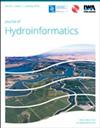采用文丘里隧道的混合式风力发电机-水蒸馏系统建模
IF 2.2
3区 工程技术
Q3 COMPUTER SCIENCE, INTERDISCIPLINARY APPLICATIONS
引用次数: 0
摘要
摘要本研究提出了一种新型混合风力发电-水蒸馏系统的开发,旨在为资源有限的贫困偏远社区提供可持续的解决方案。该系统的优点是能够昼夜运行;因此,即使在有风的阴天,它也能产生更多的蒸馏水。该系统包括与风力涡轮机集成的文丘里隧道、附加的不纯水箱和位于末端的冷凝器。喉部的加速气流有两个目的:从水箱中蒸发水分和通过风力涡轮机发电。随着气流减速和沿分流段的压力减小,蒸发的水随后被收集起来。通过检查空气速度、面积比、相对湿度以及空气和水温,采用理论和计算模型来设计系统。该系统在温暖和干燥的天气条件下表现出增强的性能,从而优化了其性能。反之,温度和相对湿度不影响发电;更高的空气速度和更大的面积比增加了它。这种数据驱动的方法确保了最佳设计参数的选择,使系统的能力与特定的淡水需求保持一致。本文章由计算机程序翻译,如有差异,请以英文原文为准。
Modelling of a hybrid wind power generator–water distillation system using a Venturi tunnel
Abstract This study presents the development of a novel hybrid wind power generator–water distillation system with the objective of providing sustainable solutions for impoverished isolated communities facing limited resources. The advantage of the proposed system is its ability to operate day and night; therefore, it produces larger quantities of distilled water even on cloudy days with winds. The system comprises a Venturi tunnel integrated with a wind turbine, an attached impure water tank, and a condenser located at the end section. The accelerated airflow at the throat section serves two purposes: water evaporation from the tank and power generation through the wind turbine. The evaporated water is subsequently collected as the airflow decelerates and the pressure decreases along the diverging section. Theoretical and computational modelling is employed to design the system by examining air speed, area ratio, relative humidity, as well as air, and water temperatures. The system exhibits enhanced performance under warm and dry weather conditions, thereby optimizing its performance. Conversely, temperature and relative humidity do not affect power generation; it was increased by higher air speeds and larger area ratios. This data-driven approach ensures optimal design parameters are selected, aligning the system's capabilities with the specific freshwater demand.
求助全文
通过发布文献求助,成功后即可免费获取论文全文。
去求助
来源期刊

Journal of Hydroinformatics
工程技术-工程:土木
CiteScore
4.80
自引率
3.70%
发文量
59
审稿时长
3 months
期刊介绍:
Journal of Hydroinformatics is a peer-reviewed journal devoted to the application of information technology in the widest sense to problems of the aquatic environment. It promotes Hydroinformatics as a cross-disciplinary field of study, combining technological, human-sociological and more general environmental interests, including an ethical perspective.
 求助内容:
求助内容: 应助结果提醒方式:
应助结果提醒方式:


